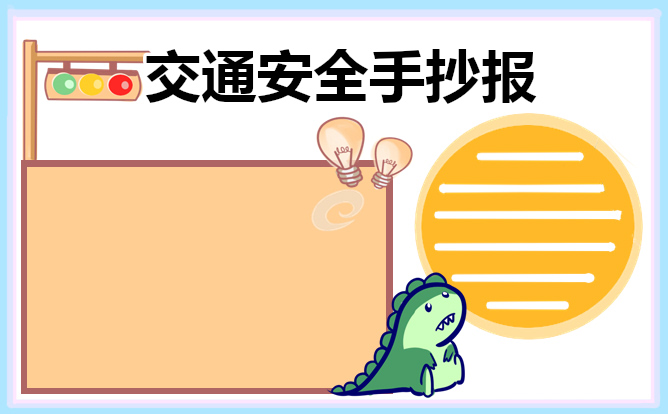新概念英语第一册语法知识点之情态动词的使用
学习英语语法是很多人的痛点,今天小编给大家带来了新概念英语第一册语法知识点之情态动词的使用,希望能够帮助到大家,下面小编就和大家分享,来欣赏一下吧。
新概念英语第一册语法知识点之情态动词的使用
can, must, may, might, need
情态动词can(能够), must(必须), may(可以)
结构:主语+can/must/may+动词原型
He can make the tea.
Sally can air the room.
We can speak English.
Can he make the tea?
Can Sally air the room?
Can we speak English?
He cannot make the tea.
Sally cannot air the room.
We cannot speak English.
Yes, he can. No, he cannot.
Yes, she can. No, she cannot.
Yes, we can. No, we cannot.
What can you do?
(必背)
注意:情态动词的句子没有第三人称单数的变化,不要在情态动词或动词后面加S。
1)Must/have to的区别
must 表示必须,是主观上觉得应该做,have to是不得不,是由于客观条件逼迫的必要要做
must 只能用在表示现在和将来的句子里,而have to do可以用在任何时态
2)must, may, might表示猜测:
must do 表示对现在事实的猜测
must have done表示对过去事实的猜测
must have been doing 表示对过去正在进行的事实的猜测
may/might do, may/might have done表示没有任何事实依据的猜测,might的可能性更小。
can’t/couldn’t 表示不可能
新概念第一册语法讲解:一般现在时
1、含有be动词的句子
He is a teacher.
The girl is very beautiful.
Tim and Jack are students.
Is he a teacher?
Is the girl very beautiful?
Are Tim and Jack students?
He is not a teacher.
The girl is not very beautiful.
Tim and Jack are not students.
Yes, he is. / No, he is not.
Yes, she is. / No, she is not.
Yes, they are. / No, they are not.
2、不含有be动词的句子,即含有一般动词的句子。
(1)第三人称单数及单数名词
He likes books.
She likes him.
The dog likes bones.
Does he like books?
Does she like him?
Does the dog like bones?
He doesn't like books.
She doesn't like him.
The dog doesn't like bones.
Yes, he does. / No, he doesn't.
Yes, she does. / No, she doesn't
Yes, it does. / No, it doesn't.
注意:第三人称单数形式一般在动词后面加S,不要和名词复数混淆,变否定句或疑问句时名词复数没有任何变化。
(2)其他人称及复数名词
I want to have a bath.
We have some meat.
The students like smart teachers.
Do you want to have a bath?
Do we have any meat?
Do the students like smart teachers?
You don't want to have a bath.
We don't have any meat.
The students don't like smart teachers.
Yes, I do. / No, I don't.
Yes, we do. / No, we don't
Yes, they do. / No, they don't.
新概念第一册语法讲解:现在完成时
现在完成时
构成:主语+助动词have, has+过去分词
用法:
1) 表示过去发生的和现在有某种联系的动作,常和just, usually, already, since等时间副词连用。
I have just had lunch. (饱了,不用再吃了。)
He has had a cup of tea.(不渴了,不用再喝。)
They have already had their holiday. (不能再度假了。)
The boy has already read the book. (已经知道书的内容了,不用再看了。)
2) 询问别人是否做过某事一般用现在完成时:
Have you finished your homework?
Have you been to Beijing?
Have he seen the film?
3) 表示开始于过去并持续到现在的动作
I have lived in Beijing for twenty years.
I have worked for this school for 1 year.
4) 表示一种经历,经验:去过…地方,做过…事情,经历过…事情
I have never had a bath.
I have never seen a film.
I have never been to cinema.
I have ever been to Paris.
Have been to表示去过,have gone to 表示去了
I have been to London.(人已经回来)
He has gone to London.(人还在那里)
5) 表示一种结果, 一般不和时间副词联用
I have lost my pen.
I have hurt myself.
He has become a teacher.
She has broken my heart.
句型变化:
Have you lost your pen? I have not lost my pen.
Yes, I have. / No, I have not.
What have you done?
What has he done?
一般过去时与现在完成时的区别:
凡是有明确的表示过去的时间状语的句子为过去时。
注意:有些动词表示的动作有一个终点,不能再延续,因此不能和表示一段时间状语连用。
错:I’ve left Beijing for 3 days.
对:I left Beijing 3 days ago. I have been away from being for 3 days.
新概念英语第一册语法知识点:定语从句
定语从句
1.了解定语从句的构成,首先应了解一些相关的基本概念。
a.被修饰的名词等成分通常叫做先行词;b.连接先行词和定语从句的词为关系词。
2.定语从句由关系代词、关系副词和关系限定词三类关系词连接而成,这三种也将在定语从句讲解中一一说明。
定语从句讲解关系词的具体用法
1.关系代词 which,who,whom,that 和 as
2.关系代词,顾名思义,必有代替对象。上述五个关系代词各有其具体指代对象,在从句中作相应的成分。此外,它们引导的定语从句和先行词是形容词与名词的修饰关系。
例句及翻译
例句1:
Pumas are large,cat-like animals( that/which are found in America.)
【译文】美洲狮是体形似猫的大型动物,产于美洲。
【注解】关系代词作从句主语,不可省略。
例句2:
The house (that/which we built last year) is very attractive.
【译文】我们去年建造的房子很讨人喜欢。
【注解】关系代词作从句宾语,可省略。
例句3:
The novel (with/which most of you are familiar) has been adapted for the
screen.
【译文】你们大多数都很熟悉的那部小说已被改编搬上了荧屏。
【注解】关系代词直接置于介词后作介词宾语,此时不可被that替换,也不可省略。
例句4:
He was no longer the reckless young man( that/which he was two years
ago).
【译文】他不再是两年前那个莽撞的小伙子了。
【注解】关系代词作从句表语,可省略;此外,先行词the young man代表一种状态,属物的范畴,不能用who来引导定语从句。
例句5:
Migrant workers(to whom much more attention has been paid) strongly desire
that their wages should be duly paid.
【译文】现在民工受到了社会更大的关注,他们强烈渴望自己的工资能够及时发放。
【注解】关系代词直接置于介词后作介词宾语,此时不可被who替换,也不可省略。
例句6:
Such accommodations(as they could find) were generally expensive.
【译文】他们能够找到的这些住所费用往往比较昂贵。
【注解】之所以选择关系代词as引导定语从句,是因为前面有such之故。
例句7:
Such inns(as there were in the mountains) were generally poor.
【译文】这些山区里的酒馆条件往往比较糟糕。
【注解】之所以选择关系代词as引导定语从句,是因为前面有such之故。 例句8:
This is the same mosquito(as bit you just now).
【译文】这只蚊子和刚才咬你的那只是同一种蚊子。
【注解】之所以选择关系代词as引导定语从句,是因为前面有the same之故。
定语从句讲解小结:
(1)一般来讲,which和that用来替代指物的先行词,在定语从句中可作主语、宾语或表语
(that不能作介词后面的宾语);who替代指人的先行词,在定语从句中作主语或宾语(但不能
作介词后面的宾语);whom是who的宾格形式,替代指人的先行词,在定语从句中只能作宾 语;as作为关系代词,只能用于一些特殊搭配(such... as/the
same... as)。
(2)that既可指物也可指人,但在当代英语中,多指物。
(3)当关系代词在限制性定语从句中作宾语或表语时,经常可省略,但当which,whom 紧跟在介词后则不可省略。
例如:
Is that the man(with whom you are going to set up a law firm)?
Is that the man(who/whom)(you are going to set up a law firm with)?
只能用that的情形
a.当先行词为 all,much,anything, something, nothing,everything, little,none 等不定代
词,或先行词被all,any,every等不定代词修饰时,只能用that替代指物的先行词。
例如:
①That'a all(that I ask for).
【译文】这就是我要的一切。
②Is there anything(that I can do for you) ?
【译文】我可以为您效劳吗?
③Every tearo(that intends to participate in the contest) is to submit a fee
of 2000.
【译文】每一个意欲参加比赛的队伍都应该缴纳两千元的费用。
b.先行词被形容词最髙级修饰,或被the only,the first,the last,the next,the
very等修饰时,只能用that替代指物的先行词。
例如: ①He eats the finest food(that is available).
【译文】他吃的是所提供的最精美的食物。
②The first case of bird flu( that was reported in Thailand) captured the
attention of officials with WHO.
【译文】泰闰报道的例禽流感引起了世界卫生组织官员们的注意。
③This is the very book(that I have been hunting for a long time).
【译文】这就是我长期以来一直寻找的那本书。
c.先行词既包括人,又包括物时。
例如:
①He is always talking brilliantly of the book and author(that interested
him)
【译文】他对那本书及其作者很感兴趣,总是兴高采烈地谈论着他们。
② We were deeply impressed by the school and its teachers (that we had
visited there).
【译文】我们访问的学校和老师给我们留下了深刻的印象。
(5)只能用which的情形
a.用于介词之后(可参见A例句3)。
b.用于非限制定语从句中。
新概念英语第一册语法知识点:名词性从句
名词性从句
在句子中起名词作用的句子叫名词性从句 (Noun Clauses)。 名词性从句的功能相当于名词词组,
它在复合句中能担任主语、宾语、表语、同位语、介词宾语等,因此根据它在句中不同的语法功能,名词性从句又可分别称为主语从句、宾语从句、表语从句和同位语从句。
分类
引导名词性从句的连接词可分为三类:
连词(5个):that (本身无意义。引导单一的宾语从句时that常可省略,但引导主语从句、表语从句、同位语从句时that通常不被省略)
whether,if (均表示“是否”表明从句内容的不确定性)
as if ,as though (均表示“好像”,“似乎”)
以上在从句中均不充当任何成分
连接代词(10个):what, whatever, who, whoever, whom, whomever, whose,whosever,
which, whichever
连接副词(7个):when, where, how, why, whenever, wherever, however
不可省略的连词:
1. 介词后的连词。
2. 引导主语从句和同位语从句的连词不可省略。
That she was chosen made us very happy.
We heard the news that our team had won.
3. 在从句中做成分的连词.
比较
whether与if 均为"是否"的意思。 但在下列情况下,只可用whether:
1. whether引导主语从句并在句首。
eg:Whether he can come to the party on time depends on the traffic.
2. 引导表语从句。
eg:The question is whether we can get in touch with her.
3. whether从句作介词宾语。
eg:I am thinking about whether I should quit my present job.
4.if与whether都可以与or not 连用,但后面紧跟or not 时只能用whether。
We didn't know whether or not she was ready.(此时只能用whether)
I wonder whether/if the news is true or not.(此时则二者都可以用)
5.后面直接跟动词不定式时。
6.引导同位语从句时。





